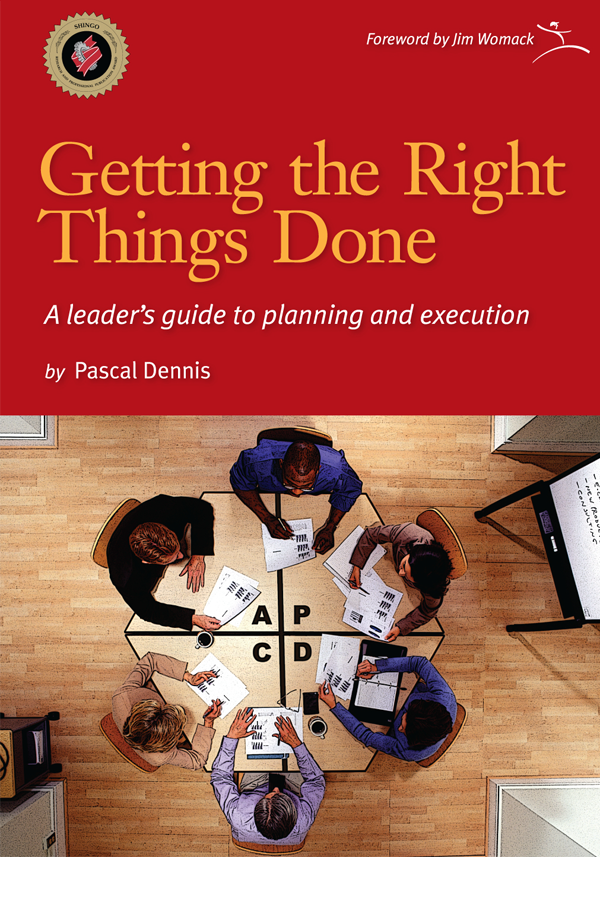An interview with Sarah Garner, vice president & regional financial manager, Turner Construction New York Region.
Mike De Luca: Turner started with lean in construction operations; why was it also important to Turner to bring lean thinking to finance?
Sarah Garner: It’s important for the whole organization to be learning and practicing lean at the same time. We’re all trying to get to the same place with lean, whether it’s operations or finance, so if operations is moving forward with lean and finance isn’t, there’s a disconnect.
How did you, as a finance leader, get started with lean? What did you try, how did it turn out, and what did you learn from that initial experience?
Sarah: In New York, we saw how the operations group was really working to implement lean thinking. I was in meetings where they were talking about lean, so I asked our internal lean coach how finance could get involved. Everything in operations is based on meeting a schedule, and we have plenty of work in finance, such as client billing, that’s on a schedule too. There was one client project where we were challenged in getting paid on time, so we learned and applied lean concepts – such as implementing a pull plan – to ensure we would get paid on time; this was back in 2017.
It was like going to the gemba both internally and with the customer. You have to understand everyone’s process and what’s getting in their way in order to improve it.
The lean improvements worked. We made the process visible by developing a calendar with all the deliverables required to produce the client bill so that we could submit it on time. The calendar included not just our internal process steps to produce the bill but also the client-side process for actually paying the bill. We had always been focused on our internal process to submit the bill, but we didn’t understand what it took the customer to pay it. It was like going to the gemba both internally and with the customer. You have to understand everyone’s process and what’s getting in their way in order to improve it. Once we developed the calendar and made it visible, we were more consistent in submitting bills on time, and the client was able to pay us on time more consistently.
What are some of the other ways you’ve integrated lean thinking into finance? What have the most significant benefits been for the finance team and for Turner and its customers?
Sarah: A great example is our daily huddles, which are one way in particular that lean thinking shows up in my day-to-day work as a finance leader. The huddles picked up significantly when we went to remote work last year. We used our huddles to help keep the work going since everyone in finance went to remote work at the beginning of the pandemic. Prior to that, we had experimented with the daily huddle, but I honestly hadn’t completely bought into the fact that finance needed a daily huddle because finance’s work is mostly on a monthly cycle, whereas construction is daily. Why would finance huddle every day? What would we talk about? I have 85 people spread across the tri-state area and upstate, and we soon discovered that the daily huddle became very important for everyone to stay clear on what they were doing.
The daily huddle is 15 minutes and follows a standard agenda that gives everyone the opportunity to check in. We cover these main questions:
- What’s your priority today?
- What hot buttons or concerns are there today that we need to be aware of or plan for?
- What do you need from me?
- What do I need from you?
- Do we need to problem-solve? If so, the discussion continues to a working session after the huddle. The team can use an additional 30 minutes right after huddle to problem-solve something that’s time-sensitive and while the right people are still on the call.
Some people have said now that we’re back to working on-site together, we don’t need the daily huddle anymore. But I’m convinced we need to stick to it because it clarifies everyone’s plan for the day and eliminates a lot of the back and forth in emails and phone calls that contribute waste to the rest of the workday.
As lean leaders, in addition to putting out the fire, we need to work with the team to understand what caused it so we can prevent another similar one in the future; this was the case with project close-outs.
Another way we’ve integrated lean thinking in finance is in project close-out. As leaders, we often find ourselves addressing fires that come up. As lean leaders, in addition to putting out the fire, we need to work with the team to understand what caused it so we can prevent another similar one in the future; this was the case with project close-outs. When a project reaches the end, finance needs to complete a total-cost analysis and final project audit prior to submitting final billing to the customer. But we often had previously unknown issues arise as part of our project-cost analysis and audit that we had to resolve, which may have caused delays in billing.
We stepped back and took the time to come up with improvements to the process so that we could complete it on time without as many last-minute fires, then we managed and checked the new process through our daily huddles. When the time came a few months later to do the next project close-out analysis and audit, we were able to reduce the number of fires through our process improvements and daily huddle practice. Now we’re looking at additional reasons why the issues found in the job audit are not identified sooner so we can address those root causes at the source and reduce the number of fires even more.
Lean thinking has become part of our work in other ways as well. Early on, we set up “study-action teams” to get the finance group thinking about how lean can apply to their jobs. They started by reading Everything I Know About Lean I Learned in First Grade by Robert Martichenko, which they found easier to relate to because it wasn’t specific to an industry such as manufacturing. Then they moved forward with team-level process mapping and process improvement. They looked at all the component inputs to the customer bill – vendor materials, direct work, general conditions, salary, trade labor, project budget – and worked on process improvements to error-proof bill accuracy.
As far as the benefits go, Turner’s customers benefit from our lean work in finance because they can rely on accurate and timely bills and information. This reliability saves them time following up with us, and it saves us time responding to questions when their bill isn’t clear.
Staff benefit from knowing that they can finish their workday on time and feel like they accomplished everything they needed to without late nights or weekends cramming to meet a deadline. This certainty is one way the organization models respect for people – making the best use of everyone’s time and skills.
Turner benefits from improved customer experience and the assurance that all revenue is being billed and collected correctly and completely. In addition, customers have a better experience, which contributes to retention, repeat business, and overall company reputation.
What’s the next thing you want to focus on and why?
Sarah: Now we’re focusing more on identifying the right key performance indicators (KPIs) and making those visual, so everyone has quick and clear insight into progress and results. Also, we’re working on the discipline of the “check and adjust” part of the continuous improvement cycle. We feel that we’re good at “planning” and “doing,” so next for us is deepening our ability to sustain and build on improvements. Selecting and making the right KPIs visible will support this. If everyone is aware, for example, that only 70% of people are completing their time sheets on time every week, then we can show the gap and more effectively work toward closing it.
Hoshin kanri, or strategy deployment, is informing our focus as well.
Hoshin kanri, or strategy deployment, is informing our focus as well. With the team-level process mapping, we made improvements and got everyone engaged in something tangible, but we’ve reached a kind of plateau. Finance leaders and Study Action Teams read Getting the Right Things Done by Pascal Dennis, which explains the lean approach to planning and deploying the company strategy. This knowledge led us to work specifically on process improvements in time reporting because this supports one of the organizational hoshins around profitability. As part of this work, all the project accountants went to gemba to see how people document their time. They’ll use their learnings from these observations to develop improvements and simplifications to time tracking. Since this is part of the company hoshin, these improvements to time-tracking will get organization-wide attention and support.
What advice do you have for other organizations who either want to get started or deepen their application of lean in accounting? What are some of the challenges they might encounter, and based on your experience, what can be helpful in working through them?
Sarah: Make sure that finance is involved. Don’t let finance be left out of the lean transformation. Everything finance does impacts operations and vice versa. So, be proactive in getting involved whether or not you think lean applies to finance and accounting — because it does.
Start small. You can’t fix everything in one day, so be prepared for a long journey. Our journey started in 2017 – we’ve accomplished a lot, and we know we’re still learning, and there’s more we can improve.
Finally, document your starting point – your baseline or current state performance – so you can see and celebrate improvements and have the data you need to check progress and make adjustments. It’s important that people feel better about the work and equally important that you have the data to document your learnings and achievements.







